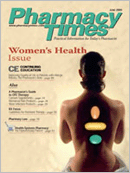Publication
Article
Pharmacy Times
RADAR Detects Drug Reactions
The Research on Adverse DrugEvents and Reports (RADAR) systemhas successfully uncovered previouslyunknown, serious reactions among 14commonly used drugs, according to areport published in the Journal of theAmerican Medical Association (May 4,2005). Investigators have found thatin the past 6 years the drug-monitoringsystem went beyond the FDA'sinformation gathered after new drugsentered the marketplace.
The FDA's reporting system relieson information voluntarily submittedby pharmaceutical companies andphysicians through the Adverse EventsReports System and the Manufacturers'User and Device Experience. Theresearchers noted that the flaw inthese systems is that they require siftingthrough huge amounts of data touncover safety issues.
The RADAR system is formatted differently.Instead of relying on hugedatabases, it starts with 25 physiciansat academic medical centers located inChicago, Albuquerque, San Antonio,Salt Lake City, and New Orleans. Thesephysicians have their clinical "ears tothe ground." If something has potential,word goes out to a broad group ofclinicians, and researchers search forother cases.
To date, RADAR has detected 16serious, often deadly, and previouslyunknown types of drug and medicaldevice reactions connected with 14commonly used drugs. The medicationsinclude the anemia drug epoetin,the cancer drug gemcitabine, and thedrug ticlopidine, used to lower the incidenceof strokes. The system has pickedup serious adverse drug reactions in954 patients. Of these patients, 169, or18%, died. Although some of the datacame from the FDA's own files, RADARwas able to find a pattern of adversereactions faster than the FDA.
Timeliness is imperative in savinglives, said study author Charles Bennett,MD, PhD. Every year adversedrug reactions account for 100,000fatalities. The FDA has mandated thatmanufacturers add 45 drug reactionsto package inserts. Identifying morethan half of these reactions, however,took more than 7 years after the drugshad been approved. "Our goal is todecrease that to 11/2 to 2 years," said Dr.Bennett.







